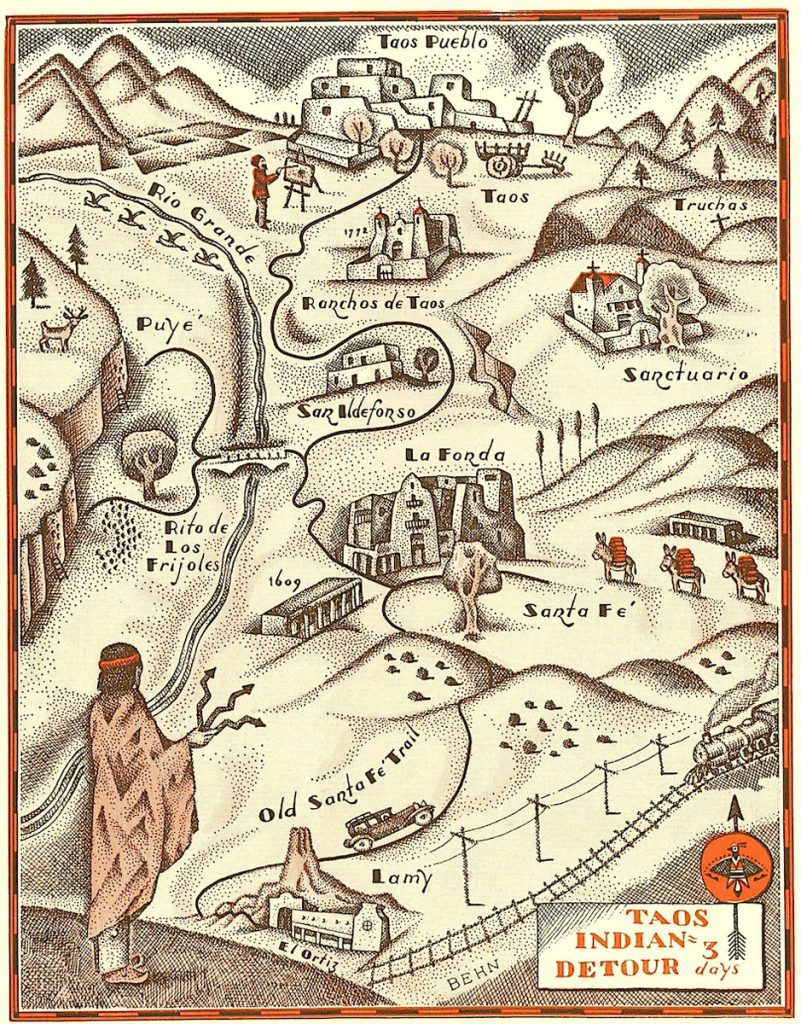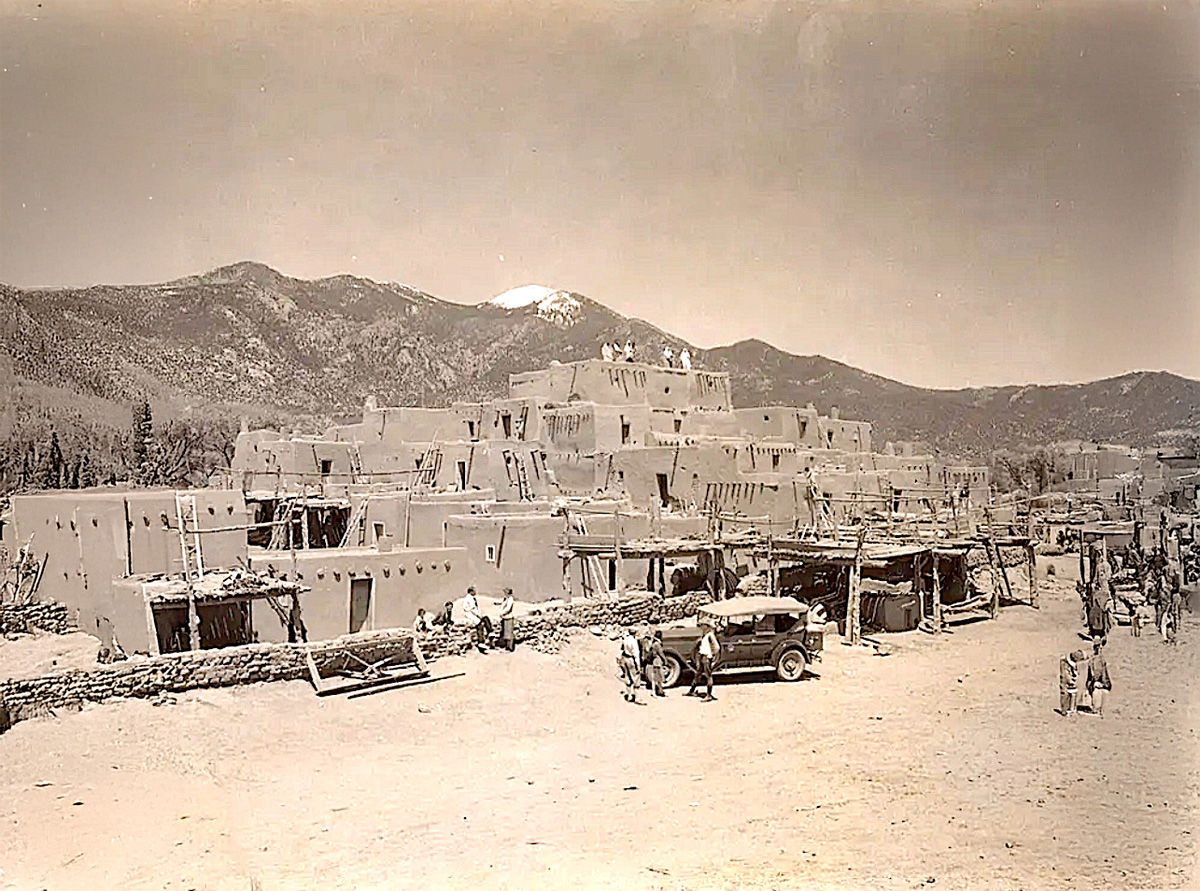What: Taos County Historical Society program
“Off the Beaten Path: Discovering My Roots Via the Southwestern Indian Detours”
Who: Maggie Duval, presenter
When: Saturday, October 5, at 2 pm
Kit Carson Coop boardroom,
118 Cruz Alta Road in Taos
Contact: Michael Wilson, (612) 743-6546

In the summer of 1926, the people of Taos and Taos Pueblo looked on with curiosity and no doubt wariness as several Packard, Franklin, and Cadillac limousines pulled up, carrying well-dressed Anglo tourists and female guides dressed in “Navajo-style” uniforms. They were the vanguard of the Fred Harvey Company’s new venture, Southwest Indian Detours, which gave adventurous travelers on the Atchison, Topeka & Santa Fe Railway the opportunity to take one-, two-, or three-day “detours from their train trip to explore New Mexico’s Indian ruins and living pueblos.”
Over the next 15 years the Indian Detour experience would deeply change the tourist experience in Taos County and the rest of the state.
Motoring in northern New Mexico in the 1920s and 1930s was arduous and challenging, but the “Harvey Cars” always traveled in convoys of at least two vehicles and the drivers always had mechanical training. Promises of luxury travel notwithstanding, the dudes and “detourists,” as they were called, must have been relieved to disembark in front of the old Hotel Don Fernando, their base in Taos.
Cost for the three-day trip was $40 in 1930 ($750 today). Starting in 1929, an optional fourth day was offered by adding the “Enchanted Circle” route north of Taos, “an exceptionally scenic 90-mile swing through the Cimarron and Red River canyons, the Mexican villages of Questa and Arroyo Hondo, the Carson National Forest, and the upper Taos Valley,” according to the Detours promotional booklet.
The Detours continued through the 1930s, successful and profitable and always adding new routes. After World War II, with great improvement in roads and a rapid increase in car ownership, the Detours became obsolete and dwindled.
Presenter Maggie Duval, a proud Taoseña and Historical Society volunteer, is the granddaughter of R. Hunter Clarkson, Ford Harvey’s assistant and the creator/manager of the Detours, and the great-granddaughter of A.G. Wells, vice-president of the Santa Fe’s passenger division. In her program, “Off the Beaten Path: Discovering My Roots Via the Southwestern Indian Detours,” she will present a multimedia overview of the Detours and discuss her journey to piece together fragments of her family’s history by retracing the Detours.



